Price Wars: GM Drops Cadillac Escalade Sticker by $10K
They might not happen as often as they once did, thanks to deregulation leading to mergers and consolidation, but fare wars once were a regular occurrence as airlines fought to snag passengers by dropping prices.
The automotive industry isn’t immune to battles waged on price. Even luxury makes sometimes have to offer deep discounts to keep the competition at bay.
Which is what Cadillac is doing to stave off a challenge from Lincoln. Sort of.
GM Cuts Half of Lordstown Plant's Workforce as Chevrolet Cruze Sales Slide
General Motors summoned all 3,000 of its Lordstown Assembly employees to the Ohio plant this afternoon, and half left the meeting with an uncertain future.
The automaker said it plans to cut the second shift at the plant, just a year after GM scrapped the third shift in the face of declining compact car sales. Lordstown, which opened in 1966, builds only the Chevrolet Cruze.
So Long, Pikachu? Toyota Prius' Adventurous Styling Due for a Toning Down
I’ll never forget gazing at the latest iteration of the Toyota Prius for the first time. Much hand waving ensued, along with words to the effect of, “No, this is all wrong.”
Styling is subjective, but as hybrid and electric vehicles enter the mainstream, designers haven’t exactly copied the space-age looks of the fourth-generation Prius. In fact, in a bid to avoid scaring off customers, automakers have charted a course for the safe and non-threatening.
That leaves the Prius as the odd man out — a model enamored with triangular shapes that eyes the Hyundai Ioniq, new Nissan Leaf, and upcoming Honda Insight with worry.
It’s makeover time!
Minivans Sales Show Some Buoyancy in the U.S., but Only Because of Two Automakers
You’d think the advent of dedicated electric vehicle platforms would breed a new era of flat-floored minivans, but most automakers just aren’t interested in going that route — internal combustion or otherwise. There’s no electric Chevrolet Venture on the horizon, nor will Ford resurrect the Aerostar in EV form and name it after a late ’60s muscle car.
Even in our clean, green future, SUVs reign.
The present, however, hasn’t abandoned the minivan, even if the segment is a shadow of its former self. March minivan sales in the U.S. topped that of last March, and year-to-date sales are up compared to 2017, despite the disappearance of two nameplates. Unlike SUVs and crossovers, however, there’s just not enough demand to put wind in every minivan model’s sales. It’s easy to imagine a near future where Fiat Chrysler and Honda own the segment.
Chasing the Dragon: Lincoln's Plan to Capture the Chinese Market
While both Buick and Cadillac have a healthy lead over Lincoln in terms of domestic deliveries, the space between them is far more pronounced in China. At home, Ford moved 111,159 examples of its premium marque in 2017 against Cadillac’s 156,440. However, China’s Caddy sales clocked in at 175,489 last year — a number Lincoln could only muse about in its wildest fantasies.
That’s because Ford exports all of its luxury vehicles to China, while GM tends to build them locally. But the Lincoln brand shows a lot of promise in Asia. Ford moved roughly 80,000 vehicles in the People’s Republic in 2017 and 54,124 of those models wore the Lincoln cross. In theory, if Ford could localize and bolster its product lineup within the country, a higher volume would be all but assured. It’s a theory the automaker intends to test, too.
QOTD: Which Newer Vehicles Will End up as Overpriced "Collectibles"?
There are a lot of charlatans on the internet, and some members of this special category of people want you to purchase their car as an investment. Anyone who’s browsed the sale ads knows the type of person I’m referring to here:
“No joyrides!”
“Very rare, collectible car!”
“Special opportunity!”
“No lowballers, I know what I got.”
Of course, what they’ve usually “got” is a vehicle priced firmly in loony bin territory. Today we want to know: In the near future, which newer vehicles will be worth far less than what these opportunistic sellers are asking?
Going Sparkless? Korea Thinking of Discontinuing America's Smallest GM Car
Last week it was the subcompact Chevrolet Sonic and a report that the little four- or five-door could bite the dust by the end of this year. Now we hear the Spark — General Motors’ smallest U.S. offering — could also be on its way to the nameplate graveyard.
Oddly, the Reuters report, which cites a GM Korea spokesman, comes just a few days after the unveiling of the refreshed 2019 Spark. Like other Gamma II platform small vehicles, the Spark comes to us by way of Korea. As you know, that embattled division is currently struggling for survival, and it doesn’t much like the look of America’s falling Spark sales.
So, what would replace the Spark and give GM Korea’s threatened factories a safer product bet? You already know the answer to this. A crossover.
Lincoln Trimming Fleet Fat to Shore Up Residual Values
Lincoln is a brand that never fully recovered from the post-recession sales slump. While volume has improved over the last several years, 2017 actually saw a very slight decrease in overall deliveries. That’s a shame, as we’ve seen Lincoln making efforts to turn things around.
Sure, the domestic luxury brand could still stand to distance itself from mainstream Fords a bit more. But Lincoln has stopped attempting to sell Buick-grade luxury at Cadillac prices and seems intent on pursuing more elegant designs. Still, Ford Motor Co. CEO Jim Hackett wants the company’s operational fitness in top form as soon as possible, and getting Lincoln’s overall value up is an important part of that goal.
One way of doing this is by leaning on utility vehicles. Navigator sales have improved dramatically since the fourth-generation model hit dealers and the Aviator seems to hold real promise. But it’s not scheduled for sale until the 2020 model year, which means Lincoln has to do more than just wait around until new and updated SUVs can right the ship.
As Chevrolet Readies a Brighter 2019 Spark, How's the Scorching Minicar Segment Doing?
The sub-subcompact “city car” segment is one of those rare occurrences where Canadians have it better than Americans in terms of choice and price. While the U.S. fields just two of these tiny runabouts (the Smart Fortwo Electric Drive does not count, and we’re not counting the Fiat 500, either), Canucks can warm their frozen cockles knowing there’s three four-door, ultra-cheap models waiting for them at local dealers.
Not only that, but all three models carry an MSRP in the four-figure range. Just barely, but in a country where an A&W Uncle Burger cost your author $9.03 last week ($9.03! No combo, either), this is tantamount to bank robbery.
So, as we take a look at the changes Chevrolet has in store for its 2019 Spark, let’s gauge the overall health of this tiny segment — north and south of the border.
Get a Stick Shift Chevrolet Cruze While You Can, Because the 2019s Won't Have 'Em
There’s two bits of bad news in the lineup of refreshed Chevrolet small cars announced today. Three, if you’re a fan of the Sonic. You see, the automaker doesn’t mention either the Sonic or the Impala in all of this 2019 model madness — lending credence to a report claiming GM plans to ditch both of those models. It’s rare for an automaker to invest in an 11th hour refresh of a model it plans to kill.
Sure, the Sonic’s last refresh came for the 2017 model year, one year later than the introduction of the current-generation Malibu, Cruze, and Spark. So maybe it’s just not due yet. But the Impala bowed for the 2014 model year and there’s still no word on any refresh or redesign.
The other bad thing will be felt only by lovers of the three-pedal, row-your-own lifestyle. What we reported in December is now confirmed: the Chevrolet Cruze goes fully automatic for 2019. It’s time to cross another affordable, manual-transmission car off a shrinking list.
March 2018 U.S. Auto Sales: Ford EcoSport Still Climbing, but so Are Other Mainstream Subcompact Crossovers
The Ford EcoSport, a new (to North America) subcompact crossover hastily inserted at the bottom of the Blue Oval’s lineup, went on sale in January of this year. No TTACer who sat in the vehicle at the North American International Auto Show in Detroit walked away impressed, and it was odd to see a new model introduction go without the obligatory first drive event.
Still, the vehicle, which starts at a hair under 20 grand and carries a 1.0-liter three-cylinder as a base powerplant, isn’t being ignored by the buying public. March EcoSport sales in the U.S. topped that of the well-regarded — but not especially capacious — Mazda CX-3. Still, as all things truck continue to garner ever greater market share in the U.S., the little Ford faces a difficult upward climb.
Ford Taurus to Follow Fiesta Out the Door: Report
It’s a bad news day if you’re a lover of traditional passenger cars, but surely you’ve grown used to this thing by now. As automakers, especially domestic ones, cast a critical eye on their lineups, many models without rear liftgates will inevitably fall victim to the quest for greater profit.
We brought you a report of the Chevrolet Sonic’s impending demise earlier today, but now it’s time to turn from GM to Ford. The same report, drawing on sources with knowledge of the company’s product plans, says the storied Taurus nameplate is not long for this world. Imagine dropping this bombshell on someone in the late 1980s.
Nowadays, you’d likely be greeted with, “They still make the Taurus?”
So Long, Sonic? Chevrolet Subcompact Said to Be on the Chopping Block
If a report by the Wall Street Journal ends up being true, General Motors will soon have an awfully lonely assembly plant on the edge of the Detroit suburbs. Sources familiar with GM’s product plans tell the publication the subcompact Chevrolet Sonic hatchback and sedan might be killed off as early as this year.
Small in size and powered by a brace of gas-sipping four-cylinders, the Sonic hit the market in late 2011. The model, produced at Orion Assembly in Michigan, came to be in the wake of the recession, offering buyers affordability and frugality with a “Made in America” stamp. In the ensuing years, however, buyers began moving on — and up — from small economy cars.
March 2018 U.S. Truck Sales: Springtime for Hauler
With an extra selling day compared to the March that came before it, last month saw U.S. new vehicle buyers continue doing what they’ve done for years. By that, we mean snap up trucks and SUVs like it’s going out of style. (There’s no indication it’s going out of style.)
According to figures from Autodata, truck and SUV sales rose 16.3 percent in the U.S., year over year, while traditional passenger cars continued to fade from the minds of new vehicle buyers. That segment declined 9.2 percent, year over year.
Monthly sales figures can be fickle, which is apparently the reason for General Motors’ switch to quarterly sales reports starting next month, but we prefer receiving data more often. And last month’s data paints a very different picture than February’s. Leaving SUVs aside, which pickups soared in March?
Shifting Up: Auto Sales Rise in March 2018
Spring is springing in most parts of the country and, as if on cue, more customers are beating their way to a dealership’s door. The market is up, in both monthly and year-to-date measures.
Mazda, Toyota, and Volkswagen are all up on their own merits both from a monthly and year-to-date perspective. In fact, compared to the same month last year, just about all the major automakers moved more metal in March.
Vanishing Act? Fewer Subprime Customers Shopping for Cars
It’ll be another 24 hours before the nation’s automakers release March sales figures, all thanks to the Easter long weekend. Shaking off the effects of a chocolate bunny induced sugar high takes a day or two, after all.
This means, at most dealers, last month’s subvented rates still apply — so, if you’re looking at snagging a 2017 model, it might not be a bad idea to lock the deal down today. Shoppers of MY2018 machines can relax, as the deals on those rides will likely be better tomorrow morning … especially if it’s a vehicle that was majorly reworked for 2019.
Until then, we have time to peruse a story from Bloomberg, one which pontificates on the sudden evaporation of subprime new car buyers from showrooms in the month of March.
Evaporation? I thought there was a glut of them! Let’s dig into the report.
More Dealers, Lease Products Coming to Mitsubishi, but No Pickups Just Yet
Now part of an alliance with cash and platforms to toss around, Mitsubishi’s growing bolder in its quest to remind buyers that it’s not about to disappear from the American automotive landscape. Buyers, of course, are already helping the brand regain its footing. February’s U.S. sales were the highest since the heady and ominous year of 2007 (up 18.8 percent, year over year).
Through the end of February, U.S. sales are up 23.4 percent over the same period in 2017.
Having crawled out of the five-figure sales number nightmare that plagued the brand over the past decade, Mitsubishi dealers met in Las Vegas recently to discuss the near future. Some requests were granted, but a long-standing demand went unfulfilled.
BREAKING: Kia Sedona Receives New Fog Lamps for 2019
Automotive trade shows typically provide little more than early access to vehicles you’ve already read about for months. But every so often details emerge that are so incredibly hot, you can’t even begin to fathom why God chose to trust you with them.
At this week’s 2018 New York International Auto Show, Kia Motors America unveiled a refreshed 2019 Sedona minivan, which — get a load of this — has totally new fog lamps. These babies aren’t even remotely the same shape as the outgoing version’s bulbs. Those old round heaps are over and done with; we’re entering an entirely new era of illumination, folks.
To be accurate, the new Sedona actually has entirely new front and rear fascias but, after staring at the 2019 model for several minutes, the only standout upgrade seems to be the fog lights. Which is strange because, when compared with the older model, it becomes immediately apparent that the refresh worked some legitimate magic on the family wagon. Don’t believe us? Well, here is a visual sample of the 2018 Kia Sedona:
Freeze It Again, Tony: 2018 Fiat 500 Urbana Edition
Faced with a tough market, what’s an automaker to do when trying to make noise in a crowded arena? Introduce a special edition, of course.
Fiat’s done just that with its 2018 Fiat 500 Banana Cabana Urbana Edition. The company is dropping this version of the 500 at this week’s New York Auto Show.
Please Be True: Lincoln Planning a Return to Suicide Doors on Continental, Report Claims
The future of the slow-selling Lincoln Continental couldn’t be more hazy, but a new report claims the brand is preparing a last-ditch effort to revive interest in the flagship sedan. How does Lincoln plan to reverse a sales slide amid an industry addicted to crossovers?
Suicide doors.
Yes, the novel layout once favored by luxury American automakers — and returned to prominence with the iconic 1961-1969 Continentals — could make a comeback.
'Limited' to the Number It Can Sell: Infiniti Cranks up the Exclusivity of Its Two Largest Models
Even with vehicles that aren’t at the forefront of public discourse, the winds blowing in favor of trucks and SUVs usually fill the sails of under-the-radar models, too. That’s been the case, more or less, for Infiniti’s top-of-the-heap QX60 and QX80 utility vehicles.
Born as the JX35, the QX60 three-row crossover shares its unibody architecture with the Nissan Pathfinder, but, despite a facelift for 2016, sales slipped last year. Its larger sibling, the body-on-frame, Nissan Patrol-based QX80, gained its own facelift for 2018. The range-topping SUV is the poster child for gradual sales inflation. Between 2016 and 2017, the QX80 found an extra 1,109 buyers in the United States. Another 1,126 hopped aboard between 2015 and 2016.
Hoping to lure more customers into the showroom (while squeezing more profit from both models), Infiniti is putting a time-honored strategy into action. For 2019, the automaker dials up the glitz and slaps on a “Limited” label.
Uptown Living: Mazda Dealer Council Boss Says Brand Is a 'Strong Seven or Weak Eight' on the Classy Scale
There’s still a ways to go, but the transition of Mazda’s image into that of a semi-premium automaker is well underway. The latest interiors — and exteriors — emerging from the brand boast extra refinement, better materials, and a subdued elegance you won’t find on, say, a Nissan.
Mazda’s getting there, but in the meantime, sales remain an issue. Between the brand’s recent U.S. sales pinnacle in 2015 and the end of 2017, volume fell 9.3 percent. There’s a plan to turn it around, and it doesn’t all have to do with the automaker’s looming mystery crossover.
Dealers Expect Toyota to Come Through With New Crossover Models
While Toyota already boasts a well fleshed out utility lineup, it seems everyone agrees there’s more money to be made in the middle. By that, we mean the juicy sweet spot spanning roughly the compact to midsize segments, where sales potential is the greatest.
Toyota has already suggested there’s another model to come, but we now hear that dealers — the best gauge of buyers’ desires — fully expect the automaker to follow through. And not just with a single model.
As It Tries to Gain Traction in Europe, Jeep Brand Boss Promises 'the Year of Jeep'
Two years ago, Fiat Chrysler CEO Sergio Marchionne could barely contain his enthusiasm for the Jeep brand and its barely-tapped global appeal. A sales juggernaut in America, the rugged, go-anywhere brand had a stable of models ripe for the global picking. All it needed was more local production, more new models, and voila — world-straddling dominance.
Two years later, and the brand’s growth predictions are starting to look less than plausible. Marchionne hoped for worldwide Jeep sales of 2 million vehicles in 2018, but last year’s sales may well have been a glass of cold water in the face. While the brand’s strategy could still pay off, it’s going to take longer than expected to reach Marchionne’s target.
Forget the minor markets — Europe needs to learn to love Jeep, America needs to pick up the pace, and China can’t back off now.
The Thin Green Line: 2018 Honda Accord Hybrid Heads to Dealers, Undercuts Nemesis in Price
The epic battle known as Honda Accord vs. Toyota Camry won’t end until we’re all sitting in the backseat of a driverless electric Ford shuttle bus, content in knowing we’re doing the right thing for society. Future cities, man.
Until then, there’s cars to sell, and nothing motivates buyers like price. As re-skinned and improved 2018 Honda Accord Hybrids head to dealer lots, the automaker has clearly staked itself out as the value green buy, slashing $4,505 from the previous model’s entry price. That puts the hybrid’s chief rival in an unenviable position. A base Camry hybrid now retails for considerably more, but, if overall sales numbers tell us anything, Toyota probably won’t break into a sweat after reading this news.
2019 Kia K900 Piles on the Luxury, but Will Buyers Pile on the K900?
Everyone’s favourite full-size, rear-drive Kia sedan returns with all-new clothing for 2019, and the Korean brand has seen fit to show us the car’s exterior before its debut at this month’s New York Auto Show. That’s good, as we’re not likely to invest much time in it at the show. Sorry, Kia.
Stubbornly refusing to vacate the full-size luxury field, Kia’s new K900 — sold as the prestigious K9 in the automaker’s home market — looks to bump up refinement in areas drivers found lacking. Given that the K900 is widely expected to borrow the Genesis G90’s platform and powertrains, ride quality and muscle shouldn’t be an issue.
Nissan Fixes a Problem: Salespeople Who Aren't So Hot at Moving Trucks
To think of the Nissan brand is to think of nameplates like “Sentra,” Rogue,” and, just maybe, “Pathfinder.” That’s traditionally as truck-like as a non-gearhead’s thoughts get after hearing the automaker’s name. As it continues to position itself as a serious truck maker and Detroit Three competitor, Nissan knows this needs to change.
While the little Frontier has graced our landscape for two decades, the process of purchasing one usually comes down to looking at the window sticker, asking if it comes in a cheaper version, then perusing a very basic list of features. Little different than buying (or selling) a car or crossover. That works for the simple Frontier, which sells great despite its advanced age, but it doesn’t work for would-be Titan buyers who stop in at a Nissan dealer after kicking the tires over at the Ford shop.
With this in mind, Nissan’s now moving its Titan-boosting efforts into the showroom.
Lincoln Officially Dusts Off the Aviator Name, Prepares for a Future That's Short on Tradition, Big on Cargo
Given the direction Lincoln is headed, it’s unlikely we’ll see a return of the Town Car name anytime soon. The Town Coupe, on the other hand, seems ripe for a resurrection (as a sporty four-door SUV, of course).
Speculation aside, model names are back at Lincoln Motor Company, and the first of a series of all-new utility models will bear a short-lived moniker that disappeared after 2005: Aviator. The original Aviator, resembling a Navigator washed in too-warm water, served as the brand’s second SUV from 2003 to 2005. A 2004 concept vehicle of the same name heralded the design of the 2007 MKX.
What does the new Aviator mean for the brand? Sales, hopefully, as the brand’s suddenly flagging fortunes would leave any automaker rattled.
Death Comes to the Lincoln Continental?
It’s not something a Lincoln aficionado, or even anyone with a general appreciation for history, wants to hear, but sources with knowledge of Ford Motor Company’s product plans claim the Lincoln Continental is headed for the grave.
Speaking to Ford Authority, the sources claim Lincoln’s full-size flagship sedan won’t see a second generation, with parent company Ford choosing to pull the plug and discontinue the slow-selling model instead.
The 5 Percent Solution: Volkswagen's Not Giving up on Its U.S. Market Share Dream
Volkswagen doesn’t make much of a fuss about becoming the world’s largest automaker these days, mainly because it’s already cleared that hurdle — and in the wake of the diesel emissions scandal, no less. In the United States, however, one long-helg goal remains elusive: reaching a 5 percent market share.
While the automaker claims its top priority is shoring up its U.S. business with new, Americanized product, old dreams die hard. VW still wants the kind of market share it enjoyed in 1970, but it’s not even halfway to reaching that goal.
Is Europe Saving the Mustang? Well, Not Exactly
The Ford Mustang grabbed its passport and went overseas in 2015, crossing border after border as its parent company followed through on a plan to plunder (and grow) the right-hand-drive sports car market. Customers in Europe and China finally got a taste of pony car action as Mustang sales expanded to over 140 countries.
At home, the Mustang remains a strong seller, but the market’s growing distaste for passenger cars means even rear-drive coupes and convertibles with a storied heritage aren’t immune to volume loss. After reaching a post-recession U.S. sales high of 122,349 cars in 2015, Mustang sales fell to 81,866 units last year. Volume over the first two months of 2018 is down 21.1 percent over the same period last year.
Not to worry — the Mustang’s European popularity is keeping executives in Dearborn happy, right? Well, European customers help, but they’re far from the model’s savior. Especially if they stop buying.
Shake It Like a Polaroid Picture: New Package Arrives for the Dodge Challenger
Law enforcement officials across the nation will be eager to learn about Dodge’s new Shakedown package for the Challenger and … oh, what’s that, Steph? Not that kind of shakedown? Alright then.
In an effort to inject a bit of interest in a car that was introduced a year before Barack Obama took the Oath of Office for the first time – beyond, y’know, psychotic 707- and 840-horsepower editions – Dodge has tossed a stereo and a bit of wallpaper at its retro two-door.
Trade-in Time? Chances Are Better Than Ever You Won't Pick Up a 'Car'
If German automakers keep calling SUVs and five-door liftbacks “coupes,” maybe we’ll see a reversal of this trend. For now, however, American car buyers have never been quite so unimpressed with “cars” come trade-in time.
According to Edmunds’ annual Trade-In Loyalty Report, passenger cars just don’t have what it takes to lure buyers back into the three-box lifestyle. Sport utility vehicles, on the other hand, have all the appeal of a WWII pinup model parachuting into an overseas USAF base.
Nissan's Next-gen Altima Is Just Weeks Away, So Here's a Preview
The early-to-mid 2000s wasn’t an era of great automobile design. Frankly, most automakers should be ashamed of themselves. However, among all of the Tauruses and Malibus and bloated Accords, one midsize, low-priced sedan stood out from its peers: the Nissan Altima of 2002, which propelled the former also-ran from visual dud to eye candy stud.
The Altima’s clean, dignified design made buyers stop and look, propelling sales to new heights. Even a decade-and-a-half later, it’s still a good-looking car that — rust aside — aged well. Unfortunately, rounded, forgettable styling later drained some of the model’s appeal.
As sales of all midsize cars fall, the Altima included, Nissan hopes a radical redesign can slow the descent.
Is Muscle Coming to Hyundai's Crossover Lineup? Does It Need It?
Hamstrung by Chinese animosity towards South Korea and a crossover lineup that wasn’t sufficiently buffet-like, the Hyundai brand missed its global sales target by nearly 600,000 vehicles last year. It’s a well-reported slump, and we’ve told you about the automaker’s strategy to get its mojo back.
Crossovers, man. Lots and lots of crossovers.
While fleshing out its lineup of two- and three-row haulers seems like a perfectly reasonable plan in a world addicted to cargo volume, it looks like Hyundai’s not stopping there. Some buyers will surely want more power, and Hyundai’s prepared to deliver it.
February 2018 U.S. Auto Sales: Tough Break for Two of the Detroit Three
With only 24 selling days in which to make a buck in February, the nation’s automakers found themselves staring down the tunnel of a short month. In many parts of the country, the weather at this time of year doesn’t help matters, either.
Most major OEMs saw fewer machines wend their way off dealer lots, with a few notable exceptions.
With the UX, Lexus Now Has a Finger In Every Utility Vehicle Pie
The only thing missing is a cabriolet. With the unveiling of its new UX subcompact (“urban compact crossover” in Lexus parlance), Toyota’s premium division now spans the utility segment gamut, with models ranging from ultra-small unibodies to full-size, body-on-frame luxo-barges.
Lexus’ European arm pulled the wraps off the UX on Tuesday, ahead of the global model’s world premiere in Geneva next week. In the model’s sights are a trio of pint-sized Germans and a singular Japanese foe, all competing for a slice of a segment with unclear growth prospects.
Goodbye to the Wedge: Will Toyota Grace Us With a Next-generation IM?
The strange saga of the Scion brand ended in 2016, but there’s still two holdouts from Toyota’s foray into the funky youth market: the Corolla iM and the Mazda 2-based iA sedan.
Across the Atlantic, the iM carries the Auris name, and there’s a next-generation model scheduled for a public unveiling at next month’s Geneva Motor Show. If Toyota deems the current iM’s sales sufficient, this third-generation Auris will become your second-generation iM.
Straight Outta China, the 2019 Buick Envision Undergoes a Makeover
As the first Chinese-built vehicle offered domestically by an American manufacturer, the Buick Envision didn’t do itself any favors by launching as a truncated 2016 model year vehicle available only in uplevel trims. Its entry price shrunk as 2017s arrived, and sales rose accordingly, though not to the levels enjoyed by less-premium compact GM crossovers.
Still, the Envision fulfills a vital role at Buick, and the automaker shows no sign of second thoughts. To keep things fresh, the Envision undergoes a significant refresh for the 2019 model year.
People Still Want Cars and Minivans, Kia Exec Says, but There's Some Things Kia Just Won't Do
As market share swings rapidly towards SUVs and crossovers, automakers have had to sit down with their accountants and crystal ball to map out a product strategy for the future. The questions swirling in an executive’s mind are easy to imagine: Are cars worth it? Is it still useful having a minivan in the lineup? Does the future call for crossovers, not cars, in every size class?
Fiat Chrysler’s American divisions have already pulled out of the compact and midsize car market, and forget about the possibility of a subcompact. Minivans? Nah. Ford Motor Company’s non-truck lineup looks to be headed down a similar road. At Kia, however, there’s not one or two, but six passenger cars on offer, spanning the subcompact to full-size premium segments. Like minivans? They’ve got ’em, too.
Is this a smart strategy for a brand that saw its sales fall 8.9 percent in the U.S. last year? Sure, says Kia’s vice president of product planning — it means certain buyers aren’t being forgotten. Not everyone wants a crossover. One thing Kia won’t do, however, is follow its corporate sibling Hyundai down certain product paths.
I Think I8 Can: Will a Refresh and Extra Range Give BMW's Fading Eco Supercar a Boost?
When it went on sale in the latter part of 2014, BMW’s i8 was something of a sensation, though the enthusiasm had as much to do with the car’s jarring design as its technology. I seem to recall Tom Cruise tooling around Dubai in one, possibly in one of the 87 Mission Impossible films.
Boasting scissor type doors, a plug-in hybrid powertrain, a backseat you’d never want to find yourself in, and a sticker price well north of 100 grand, the i8’s time as a media darling wasn’t long-lived. Like a child’s new toy, interest quickly fell away.
There’s two i8s arriving this spring; one a refreshed coupe, the other offering an al fresco motoring experience, sans backseat. Perhaps more importantly, there’s been an effort to fix a serious deficiency in the i8’s green halo: its incredibly limited electric range. Pricing, now released, shows a considerable markup for the drop-top. Can a double-duty lineup, beefed-up eco credentials, and an extra shot of power gild the i8 once again?
Lexus Is Pretty Confident Buyers Will Go Green If They Don't Have to Pay the Price
As we told you last fall, Lexus took a hatchet to the price of its hybrid NX crossover for 2018, greatly narrowing the gap between it and its NX300 sibling. The model’s entry price fell by more than $2,000, essentially making the hybrid powertrain a $950 option on an all-wheel drive NX.
It’s not a strategy designed to get more hardcore greenies into Lexus dealers; rather, it’s a way of swaying the modestly eco-minded into springing for that all-important “h.” Despite early signs of success, Lexus is holding off on taking its pricing gambit brand-wide.
Seeking Global Domination, Nissan Hunts New Markets for the Leaf
After becoming something close to a joke over the past couple of years, the once-groundbreaking Nissan Leaf enters 2018 with a new skin, larger battery, and enhanced range. Next year brings an optional battery upgrade, finally giving the five-door EV a range capable of challenging Tesla and General Motors.
Now that it has a competitive vehicle positioned as a value pick in a growing segment, Nissan wants everyone to get a chance to buy one, no matter where they live. It may have shied away from sales targets in the U.S., but Nissan’s not dialing back its global ambitions.
Shockingly, Some Would-be Model 3 Buyers Would Rather Drive a Non-Tesla EV That's Available Now
Despite the fandom surrounding all things Elon Musk, there are still some electric car shoppers who’d rather drive than wait. It also seems that, when weighing a prospective Tesla Model 3 purchase, some consumers are willing to let price sway them to another car with a similar driving range.
None of this should come as a shock to those not immersed in blogs and forums devoted to championing Tesla as the sole agent of change in the automotive sphere, and the only “pure” solution to Earth’s problems. To some true believers, however, these shoppers could be seen as traitors to the cause.
That’s their problem. For General Motors, Tesla’s loss of customers is the legacy automaker’s gain.
Domestic Luxury Trucks Now Usurping Germany's Market Share of Premium Vehicles
We did it! Thanks to the modern obsession with larger vehicles and opulence, domestic luxury brands are taking off like a rocket. It’s going so well, in fact, that American automakers are starting to steal market share from high-end import manufacturers. Of course, this is only applicable to SUV and crossover sales.
As you know, sedan sales are losing ground to their high-riding counterparts. While this hasn’t resulted in the obliteration of the passenger car market, despite claims to the contrary, those vehicles are being massacred by wayward consumers. Sedans are becoming passé and this has allowed sport utility and crossover vehicles to amass a significant portion of the pie.
Nowhere is this more apparent than in the luxury market. The rapid growth of the luxury truck segment has substantially increased the United States’ share of domestic models sold with an average transaction price of $60,000 or more. Apparently, the inarguably phenomenal Mercedes-Benz S-Class doesn’t have jack squat on the GMC Yukon Denali.
Suck it, cars.
Lada: Financial Learnings of Avtovaz for Make Benefit Glorious Nation of Russia
U.S. light vehicle sales sunk slightly in 2017 after years of increases, and this year’s not looking any different. In Russia, however, it’s the opposite situation. After making like the Germans at Stalingrad for the past three years, the Russian car market is now advancing like a T-34 tank — and it has the country’s most famous car brand to thank for it.
Leading the pack is none other than Lada, a company known for cranking out archaic, seemingly indestructible Iron Curtain cars for decades with only minimal changes. That was then, though, and this is now. Spurred by a rebounding economy, sales of new Lada models helped Renault-owned parent company Avtovaz drastically cut its losses in 2017.
Lada’s top brass can give credit to a very Western product strategy.
Dealership Throughput Expected to Slip for Third Year in a Row
While sales numbers are a decent metric for assessing volume, they don’t give an accurate representation of what’s actually happening at the dealership. Instead, the figure represents the number of models an automaker was able to move from the factory. Theoretically, a manufacturer could load up a bunch of trucks at the end of the month and count them as “sold” to bolster volume — whether or not real people actually bought them.
Dealer throughput is better for assessing the current consumer climate. But we’re sure you won’t be surprised to hear that it’s cold and only expected to get colder. U.S. dealership throughput, the average number of new-vehicle sales per dealership, is expected to slip 2.9 percent this year. That equates to a mean of 920 vehicles in 2018, down from 947 in 2017.
Eager to Belong, Nissan Gives Titan and Titan XD Owners a Lift
Until now, every time a rolling wall of steel pulled up alongside you at a stoplight, blocking out nearly half of your peripheral vision, the culprit was almost always behind the wheel of a Detroit Three truck — one hoisted aloft by an aftermarket lift kit. Such kits allow pickups to mount the curb outside the 7-Eleven without endangering their fragile underbellies, while affording drivers a bird’s-eye view of surrounding environs (just not the vehicles immediately adjacent.)
Given the popularity of the Ford F-Series, General Motors’ Silverado and Sierra, and Ram’s brawny lineup, suspension lifts are generally the domain of American models. Well, Nissan wants to change this perception. In its bid to make the Titan and Titan XD pickups “one of the guys,” the Japanese automaker will offer a hands-off, bolt-on factory lift kit, ideally paired with the 5.0-liter Cummins diesel V8 for the purposes of rolling coal.*
*Neither Nissan nor TTAC endorses this obnoxious practice. Local laws may apply.
Nissan's New Strategy: Build Brand Value, Not Fleet Sales or Incentives
Nissan has long-standing tradition in North America of being a bargain brand. While the automaker fields plenty of affordable options with a base MSRP undercutting that of its rivals, it has also leaned on aggressive incentivizing and heavy fleet sales. This helped Nissan chase volume in the U.S., but CEO Hiroto Saikawa is no longer convinced it’s a winning strategy.
He’s tasking Denis Le Vot, Nissan’s new North American boss, to improve profitability and brand value after the company’s operating profit dipped 50 percent in the region in the last quarter of 2017.
It’s a tall order for Le Vot, who has only had a little over one month to settle into being the regional chairman for the brand, and Saikawa is only giving him another two to figure out how to pull it off. However, he’s hinting at a strategy that eases off dealers, offers fewer market incentives, and ditches a reliance on fleet sales.
Ford Throttles Up Production of Big-buck Expeditions, Navigators, in Bid for Boffo Profits
For an automaker worried about shrinking profit margins, spending an extra $25 million is just fine if it means cranking out 25 percent more high-margin SUVs. And the Ford Expedition and Lincoln Navigator, now minty fresh after years spent withering on the vine, certainly fit the description of “guaranteed cash generator.”
Ford plans to add that sum to the $900 million already sunk into the Kentucky Truck Plant in an effort to boost production of its full-size SUV models, knowing full well Americans buyers will snap them up the minute they roll off the line. Is there a clearer example of an automaker treating SUVs as a license to print money?
Toyota Gaining Ground in Quest for More Light Truck Sales
January was a boffo sales month for Toyota in the United States, with the automaker posting a 16.8 percent year-over-year increase across both the Toyota and Lexus brands. Toyota brand sales rose 17 percent, to the luxury division’s 15 percent.
Don’t expect that kind of growth to continue, says Jack Hollis, Toyota North America’s general manager, as the industry still expects a slump in 2018. More important to Toyota than last month’s sales, however, is the type of vehicles Toyota buyers actually took home. In this case, brand loyalists added crossovers, SUVs, and trucks to their driveway in greater numbers than ever before.
The record set for Toyota light truck sales in the U.S. last month was exactly what the company was hoping for. Still, keeping that truck-buying momentum going is now job one.
QOTD: Which Newer Vehicles Are Destined for Collector Status?
There’s always big money in the collector car market. Auction houses like Mecum and Barrett-Jackson simply roll the shiny and tempting classic metal (like that Purp Drank Impala SS) across their blocks. The old folks (or their buying representatives) in the audience quickly and happily shill out huge sums for the privilege of adding a pretty and desirable machine of yesteryear to their collection.
Let’s see if we can’t predict the not-so-old vehicles that will appear on these illustrious auction blocks in the future.
It Didn't Take Long for Another Automaker to Screw Up a Marketing Ploy
Think back. Waaay back — to 11:19 a.m.
In that article, we chronicled Fiat Chrysler’s deft handling (and perhaps, planning) of a historical Super Bowl Ram commercial that sparked a fierce social media backlash, all thanks to the spot’s use of dialogue from Martin Luther King, Jr.
We told you, all that time ago, and with all the certainty of someone knowing the sun will rise again, that the next automaker might not find itself so unscatched by a marketing blunder (if indeed you view the Ram ad as a blunder). Well, that time has come. Mercedes-Benz just offended a whole country.
QOTD: What's to Be Done With Fiat?
As we told you yesterday, Fiat’s sales are best imagined as a heavy stone — one that drops heavily into a pond after a brief, victorious flight. Two years of consecutive month-over-month sales declines in the United States is a grim situation for any brand, let alone one reintroduced just seven years ago. Blame America’s growing allergy to small cars, or a neglectful corporate parent — whatever the reason, something has to be done.
The purpose of this article isn’t to, um, throw stones at Fiat’s four-model lineup; it’s to give you an opportunity to save the brand. Or kill it off for a second time.
Bigland Gets a Break as Fiat Chrysler Shuffles the Executive Deck
There’s going to be a lot less Italian in Reid Bigland’s diet going forward, after Fiat Chrysler Automobiles removed the Alfa Romeo and Maserati portfolios from the high-ranking executive’s oversight. It’s all part of a broader raft of management changes announced today.
Bigland, quite a star in FCA’s upper echelon, will continue in his existing role as head of U.S. sales and president and CEO of FCA Canada. The executive had the two Italian luxury brands dropped in his lap back in May 2016. Earlier in his career, he headed up the Dodge and Ram brands.
Other changes are afoot as FCA attempts to give Alfa and Maserati the full-time guardian the two brands need in order to thrive.
Rare Rides: All New Fiat Models, Apparently
The Downward Spiral wasn’t just a groundbreaking Nine Inch Nails album — it also aptly describes Fiat’s current sales trajectory in North America. (Sorry for the headline, Corey.)
With January 2018 figures out of the bag, the state of Fiat Chrysler Automobiles’ Fiat brand becomes ever clearer, though we’ve known it was in trouble for some time. Reintroduced in this market in early 2011, the four-model brand continued its downhill sales slide last month, with corporate cousin Alfa Romeo outselling it for the second consecutive month.
How bad is it?
It’s bad.
Detroit Three January 2018 Auto Sales: Trucks Can't Carry It All
After the industry’s first annual sales decline of the post-recession era in 2017, the small uptick in year-over-year U.S. auto sales in January 2018 shouldn’t be seen as a trend, analysts warn. This year will apparently bring more worry for automakers as buyers plan fewer trips to the dealership.
For the domestic brands, January brought a mixed sales bag. Two members of the Detroit Three posted significant sales declines, while the third squeaking by on the strength of light truck sales. Clearly, having a lineup full of pickups, SUVs, and crossovers helps a company’s bottom line, but it’s no guarantee of ever-higher volume in today’s market.
Fleet Week: January's U.S. Auto Sales Buoyed By Fleet Volume
January started strong for several automakers in America, with the industry shifting 1,157,407 cars and light trucks last month. That represents a 1.2 percent increase over this time last year.
More than one company is guilty of padding its numbers with fleet sales, though. In one instance, it represented nearly a third of January’s reported sales for that automaker.
So Far, 2018 Auto Sales Are Better Than Expected; Thank Dangerously Heavy Incentives
With the automotive market continuing to cool off, the industry went into 2018 with a less than optimistic view. Volume for the year is anticipated to continue its downward trend but, incredibly, January appears to be on par with the same period last year — if not slightly better.
Did the analysts get it wrong? Probably not. Incentive spending was up across the board and that’ll likely be the case throughout the rest of the year. The real trick will be for automakers to keep their lineups appealing without going wild with discounts. That’s because the annual forecast still calls for lower volume than in 2017.
Hyundai Dealers Put on Notice: It's Time for Genesis, but Not Everyone Gets to Play
Hyundai Motor America and its U.S. Genesis division sent messages to Hyundai dealers this week, alerting them to the formation of an independent Genesis dealer network. Hyundai’s recently created luxury marque wants space between it and its value-focused sister division, and that means the need for standalone stores.
Shared showrooms simply won’t cut it anymore.
Right now, Genesis customers in the United States can purchase models at roughly 350 Hyundai dealers, but not for long. The plan calls for just 100 standalone stores as a starting point. If you’re a Hyundai dealer with dreams of selling a higher class of vehicles, this is your opportunity — but your chances of being selected might not be as high as those dealers already selling the brand.




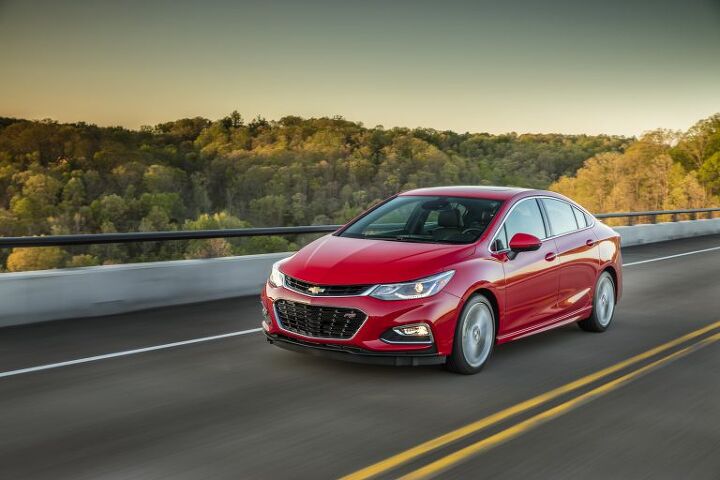


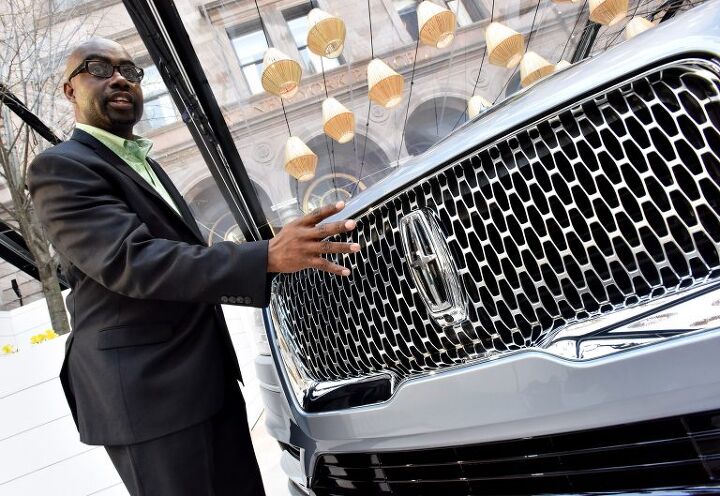








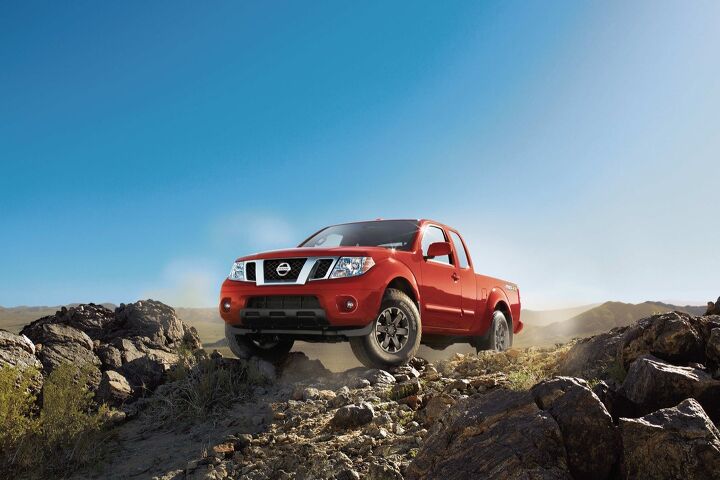
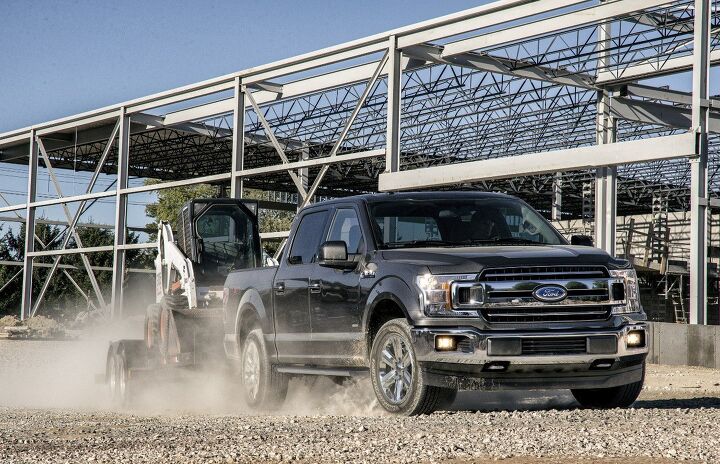


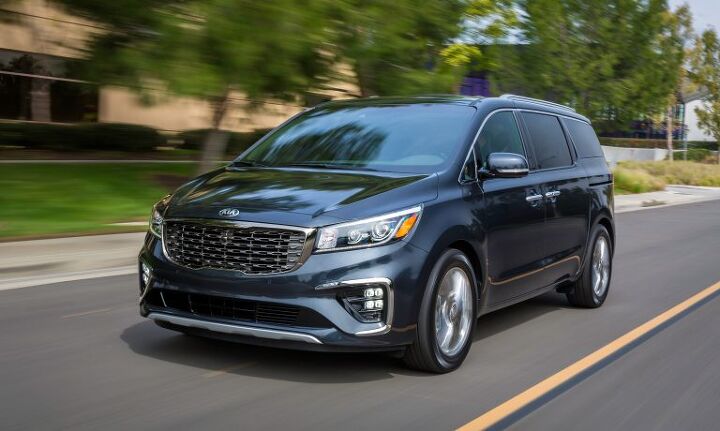

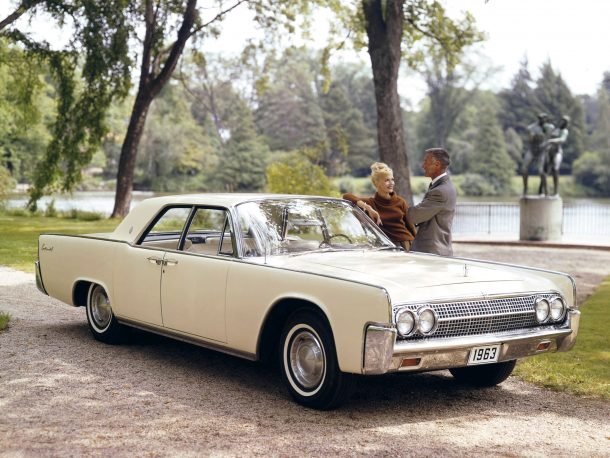
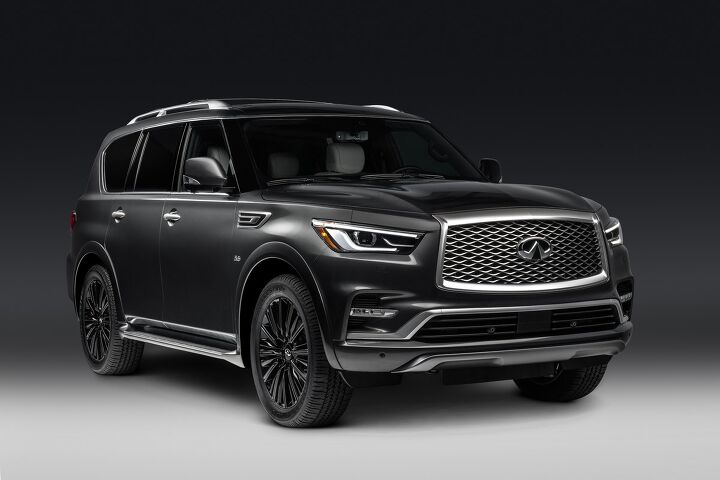
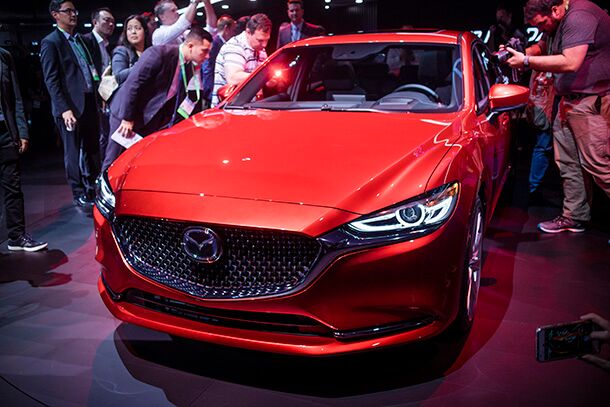




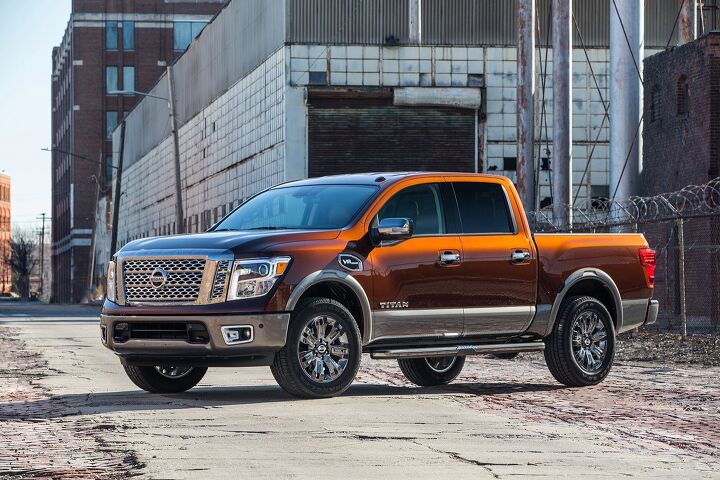

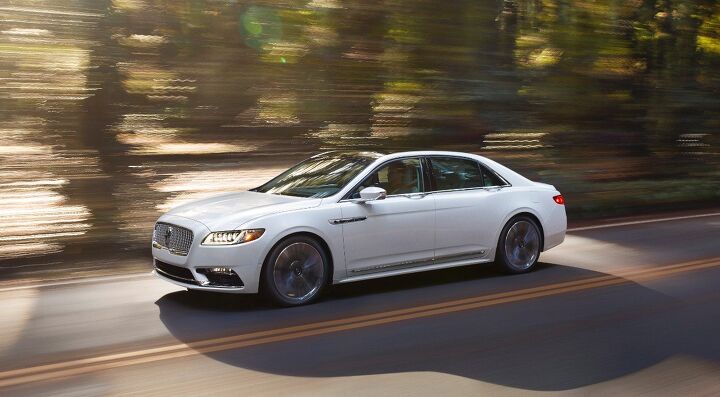












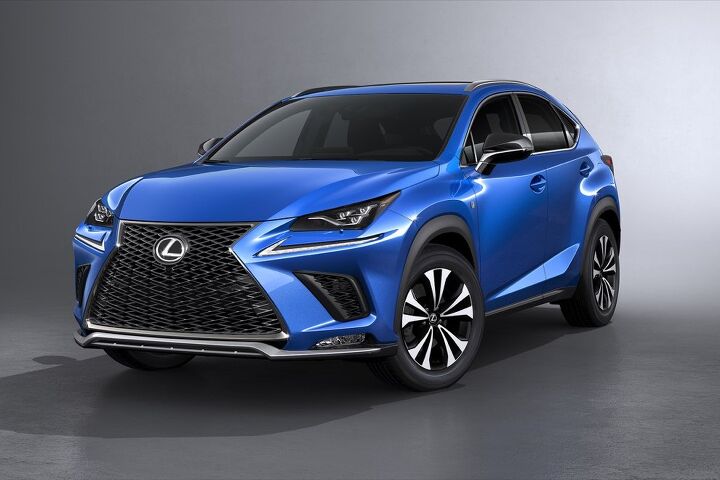
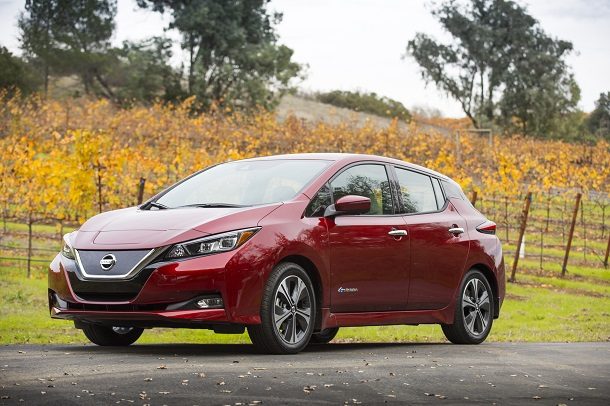

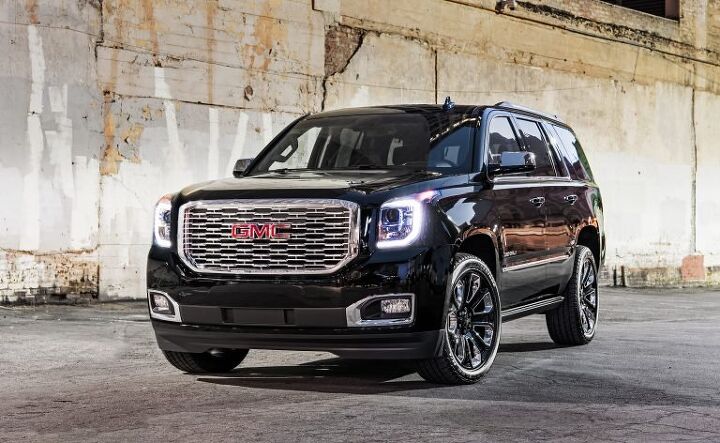




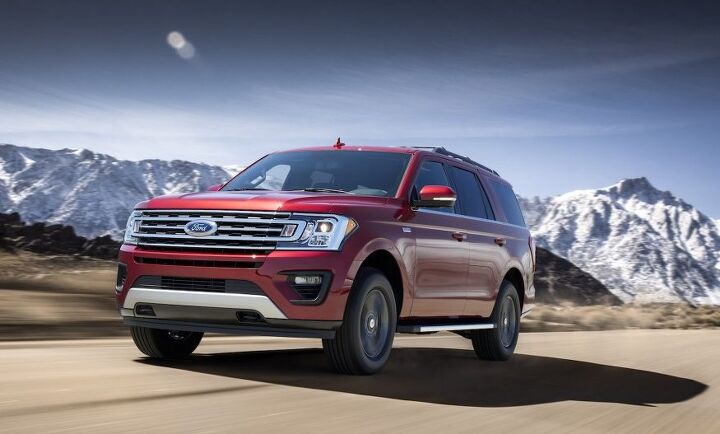


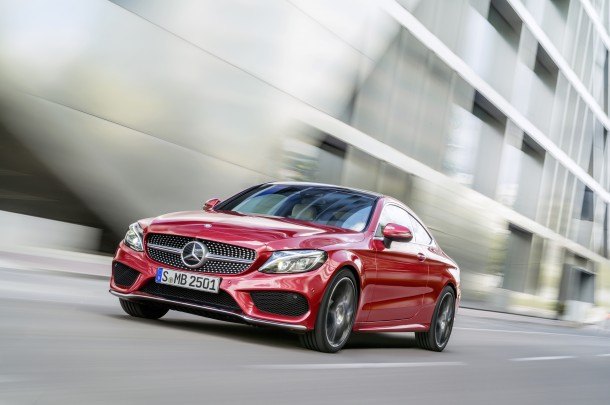





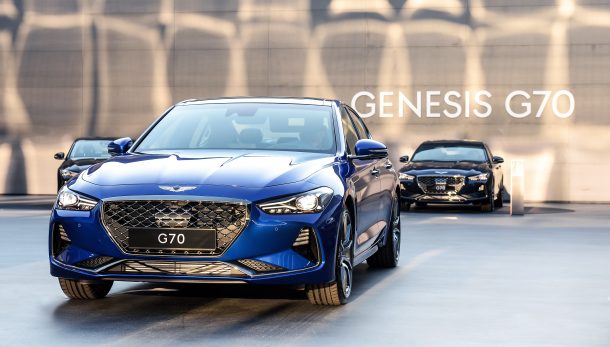












Recent Comments